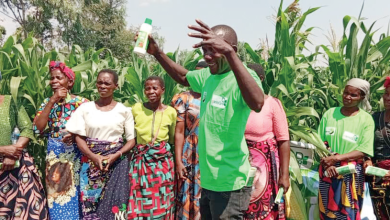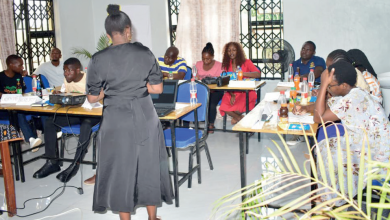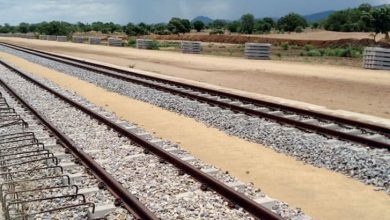Neef powers irrigation
In a sweltering sunshine, Ned Konala was seen tilling his plot in Nakalimbe Irrigation Scheme in Traditional Authority (T/A) Mabuka in Mulanje District.
From a distance, sprinklers can be seen watering his irrigated field at the foot of the magnificent Mulanje Mountain.
The plot is a lifeline for his family’s fight against hunger and poverty.
However, the farmer who cannot afford modern seed, fertiliser and irrigation accessories for winter cropping was one of the major talking points when National Economic Empowerment Fund (Neef) officials toured the scheme to appreciate the impact of micro-irrigation system loans.
On arrival near Konala’s plot, Neef chief executive officer Humphrey Mdyetseni gazed at the sprinklers with curiosity and amazement.
“I installed these sprinklers myself,” bragged Konala. “I acquired irrigation pipes through a Neef loan. I did land surveying and plumbing on my own.”

Most farmers in Nakalimbe grow maize, a staple for many Malawians.
Many settled for default canal irrigation because it is deemed affordable despite being prone to soil erosion, siltation and seepage.
Konala is among the few odd ones out.
Although there are no solar-powered pumps or engines in sight, sprinklers ceaselessly water his field.
“They use gravitational force from the slope to push the water through the pipes,” says Konala.
Other farmers are increasingly learning from Konala’s expertise.
Daniel Saikonde has similarly installed a sprinkler system in his plot.
“We take advantage of the slope. The intake pipes were placed further uphill, so more water flows downhill to our fields than what our colleagues get from the overwhelmed canals being,” says Saikonde.
Impressed by the local solution, Mdyetseni ordered his staff to arrange more loans for Konala and Saikonde despite the pending repayments.
“This is impressive. I expect farmers to be as committed and foresighted. The outstanding groups will form the foundation for a mechanised farming programme to roll out in the near future,” he said.
Local farmer Pilirani Thikiwa praised Konala as a shining example for many.
“He is a hardworking and innovative farmer who deserves a boost after using up his money to upgrade his irrigation system and finance college fees for his children,” she says.
Thikiwa plans to obtain about K150 million to expand the irrigation system to neighbouring fields for high yield.
Neef officials also toured the Kambenje Scheme in T/A Nkanda, where farmers mostly cultivate high-value crops, especially beans, rice and sugarcane.
World Food Programme reports that about 5.7 million Malawians were trapped in hunger early this year due to overdependence on disaster-prone rain-fed agriculture.
Farmers from villages surrounding Nakalimbe and Kambenje are guaranteed two to three harvests a year.
However, costly hybrid seeds and chemical fertiliser prevents them from reaping the maximum benefits of their proximity to numerous rivers.
They seldom produce enough for their household consumptions and surrounding markets.
Neef gives enterprising farmers the necessary farm inputs on loan, a doorway to improve crop production.
The support includes high-yielding seeds, fertiliser and irrigation equipment.
Neef zone manager for Shire Highlands Ernest Milanzi says myths and misconceptions in some communities discourage some farmers from adequately utilising the loan opportunity.
“As part of mindset change, we are working with chiefs to sensitise people on the importance of the loan,” he says.
About 50 farmers in the 50-acre Nakalimbe Irrigation Scheme obtained farm input loans totalling K21 million.
At the 83-acre Kambenje scheme, 73 farmers acquired input loans worth K48 million.
Konala’s story exemplifies how the loan empowers emerging farmers to reap the maximum benefits of their labour beyond the rainy season.





